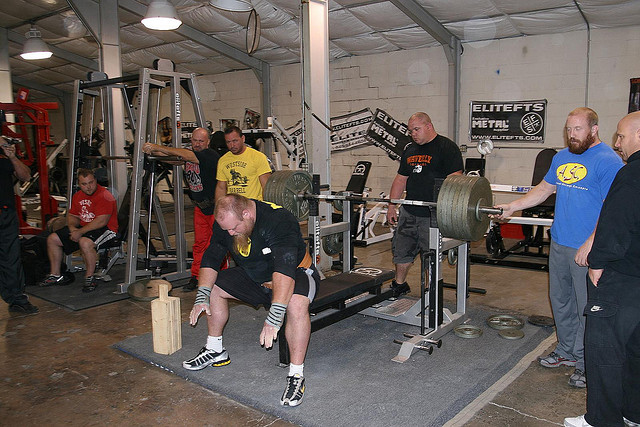
In powerlifting, there are many different paths to achieve our lifting goals. Some paths can elicit great results in short periods of time while others are developed for long-term success. In powerlifting, we base our training and our paths from meet to meet, but is this the correct thought process? Is it correct to follow others who are better? In the end, it is you who must know your needs at that particular time. While taking input and advice from others may be the path to greatness, it may also be the path to destruction.
In the gym, it’s easy to get caught up in the here and now, train above your current ability or intensity, and push your limits far beyond what is needed to achieve your goals. We have all done it. We have made a light day a day of competition and maximal effort. The real goal of the lighter day may have been restoration or dynamics, but rather we decided to go heavy, maybe too heavy. How many people have you heard of who have done insane things in the gym but never transferred over to a meet? How many people have you seen or trained with who looked like they could squat 1000 lbs but go to a meet and can barely get 800? The key to powerlifting is to have results at the meet, not in the gym. The real personal records that a lifter should be worried about are the ones that go in the record books.
There are some wrong ideas to think about when deciding how you attack your meet preparation and there are some wrong ways to plan to stay in the game for the long term. Remember that in the end it is you on the platform, not your coach or your training partners. So you must learn to be somewhat of a self coach.
Here are some things I’ve heard from top level coaches that should raise a red flag.
- Higher intensities and lifts in higher intensity zones will produce superior results. This is actually very untrue. The old saying that “the one who lifts the heaviest the most will be the strongest” is talk of fools.Optimal training is what makes people as strong as they can possibly be and that isn’t above 90 percent all the time. An understanding of individual response to different loading regimes is the key for success. This does not mean that maximal effort does not need to be employed. It just means don’t get carried away. An understanding of individual response is also a huge factor in the success of training. Did you know that 40 percent of your training should be in the 70–80 percent range? Did you also know that 90 percent and above should only be used about 10 percent of your yearly training?
- The person who trained the hardest will show the greatest results come meet time. If this were only true, training would be easy to figure out. This would mean that the guy who is training for three hours a day wins. Unfortunately, for most of us, strength is not a constant and depends greatly on the conditions both internally and externally. If you want to increase your chances for success, then you must learn how to use the potential of your muscles and your nervous system. This means learn how to train smart, not just hard. Optimal work for your body, current condition, and environment are major factors.
- Train like the champions train, and you will be a champion. This is a huge misconception and also a huge mistake for many developing athletes. All athletes regardless of their current ability can use things from people more advanced but should not use it as a die hard template. An advanced athlete has distinct strengths, weaknesses, and needs while beginners are just generally weak and need to get stronger in all forms. At the top, many workouts are custom tailored to fit individual needs. Your workout should be the same.
- Gear training constantly is the only way to get strong.Many people in powerlifting today train in gear all year round and then wonder why their competition lifts seem to stall or fade. Raw training builds the ligaments, tendons, and muscles evenly while also giving the nervous system a break from handling otherwise impossible weights without the equipment. A good lifter should have much of his training time in minimal gear or even raw training. There will be a time to master gear, but in the beginning of your training career and in some parts of the training year, you must train raw.Posture and strength of the entire spine and pelvic region must be very strong in order to hold positions that are necessary to lift large weights that suits and shirts can allow. Hiding weaknesses with tighter gear increases injury and in the long term decreases results.In my last meet, where I totaled 2665 lbs (breaking the all-time 308-lb record), I trained raw for many weeks out of my cycle and used only full gear two times in the 15 weeks. Not only have I hit big numbers, but I have never had more than a pulled muscle.
These are some of the main factors that I have used to achieve the 2600-lb mark and an all-time world record with tons of room to spare. My training has allowed me to constantly break personal bests in one form or another for long periods of time and do it safely. Hopefully, you can do the same by training smart.
Recommended reading
· Kurz Thomas (2001). Science of Sports Training.
· Mevedyev AS (1989). A System of Multi-Year Training in Weightlifting.
· Zatsiorsky VM (2006) Science and Practice of Strength Training.








